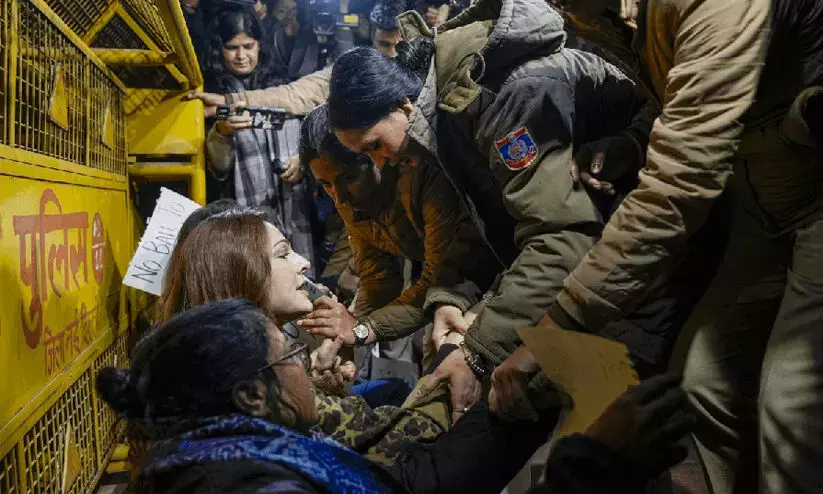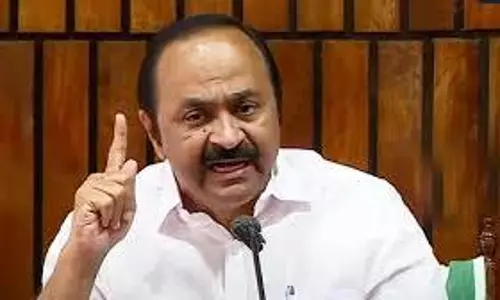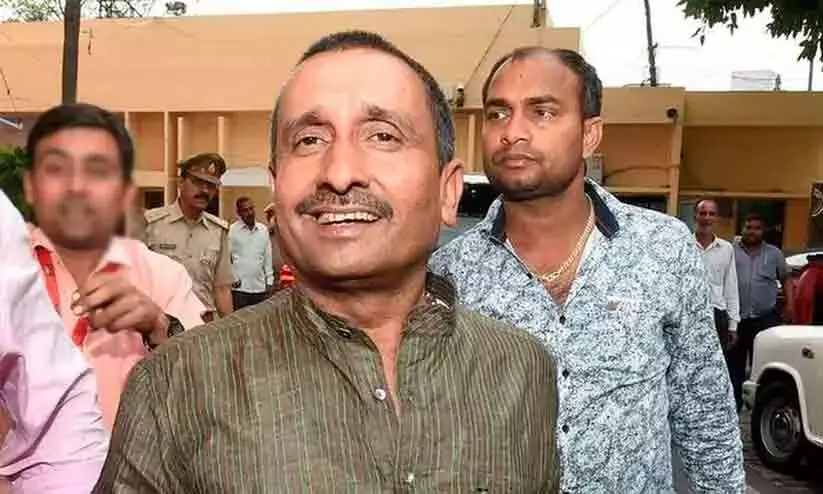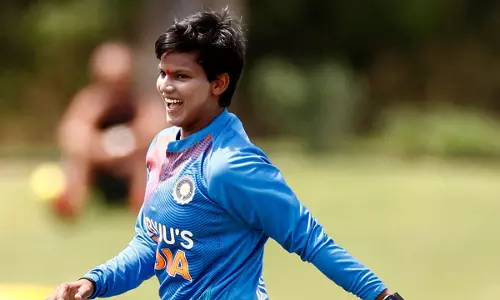
Kashmir: Solution possible; but are we prepared to heed?
text_fieldsIf the killings and civil unrest in North India are not halted, anarchy would be spreading out. Going by the recent trends, dissatisfaction of the masses is peaking. Besides the rising numbers of the jobless and hungry, a predominant factor is the failed promises of the political rulers! Not acche din but bure din stare out!
Today there could be hundreds of politicians but leaderless we are! And in this leaderless condition, distractions are no longer holding out. Standing out, unsettling developments. The man on the street is crying out. These cries will compound as we near the upcoming election year - 2019. And with that, perhaps, witness sheer havoc inflicted on whatever remains of our democratic framework. What, with political battles getting fought on social media. So busy are today’s political rulers in trying to unsettle the ‘other’ that they are least concerned about the ongoing ruptures.
In fact, right from the summer of 2014 when the BJP came centre- stage, the political mess has been getting messier. Blatant use, rather misuse of the political machinery. Gone were the traditional notions of governance. And though in Uttar Pradesh BJP’s sway has been somewhat dented by the BSP-SP formidable combination, still worries do hold out because of the expected political intrusions that fascist forces could hold out in the coming months. Worries not just on account of the rising numbers of encounters and encounter killings in the State but also because the communal divide has been ‘made to’ stretch on still further so that low scale rioting prevails, distracting the dying human being from the ground realities. Maar - kaat- dhaars on, as fascist agendas hold out.
Focusing on the Kashmir Valley, the recent round of killings, not just shocks but provokes one to ask the basics: Are killings going to resolve the crisis or only widen gaps? Where is the transparency to these killings? Why are innocent civilians killed and in such large numbers? Why are more and more Kashmiris hating the military might they have been subjected to?
Kashmiris are describing the situation in the region as worse than ever before; yes, disintegrating by the day as killings have been ongoing. Leaving a deep impact on the inhabitants, especially the young. I am quoting from a freshly launched report- Terrorized: Impact of Violence on the Children of Jammu and Kashmir ( dated March 29, 2018), put together by the Jammu Kashmir Coalition of Civil Society (JKCCS)– ‘In 15 years since 2003, 318 children (in the age group of 1 and 17) have been killed and no one among the perpetrators of these heinous crimes has been brought to justice till date.’
The report is the assessment of the violence against children in Jammu and Kashmir in the last fifteen years (2003 to 2017). It also focuses on the grim reality that ‘there are no legal and normative processes or practices protecting children’s rights in Jammu and Kashmir as hundreds of minors have been booked under the repressive Public Safety Act (PSA), with total disregard to the fact of their being children.’
And to further quote from this report – ‘Children in Jammu and Kashmir are living in the most militarized zone of the world, with the presence of 7,00,000 troopers, which exposes them to the risk of all grave six violations against children as laid out in United Nations Convention on the Rights of the Child. ...The fifteen-year period from 2003 to 2017, witnessed not less than 318 killings of children (in the age group of 1 to 17) in various incidents of violence in Jammu and Kashmir. The killing of 318 children constitutes 6.95% of the civilian killings in last fifteen years, as 4,571 civilians have been killed in Jammu and Kashmir in the same period (2003 – 2017). In the same period, i.e. from 2003 to 2017, at least 16,436 killings were recorded in Jammu and Kashmir, and the majority of them included alleged militants numbering at least 8,537 killings. The numbers indicate that in the last fifteen years Jammu and Kashmir in an average year has witnessed at least 1,095 killings, which belies the government’s claims of ‘return to normalcy. The pattern of killings of children in the fifteen-year period suggests that children were direct targets of state violence, as part of its stated offensive to curb uprising and militancy. At least 144 children were killed by Indian armed forces and state police in Jammu and Kashmir, which alone accounts for nearly half, i.e. 44.02 percent, of the total children killed. Most of the children, at least 110 of them, killed in state violence were shot dead in different incidents of violence, and not less than 8 children died due to injuries inflicted from pellet shot-guns fired by government forces. Twenty-seven children died due to drowning either caused due to the negligence of armed forces in Wular lake tragedy or being chased by government forces during a protest, where victims find no way of escape from the armed forces and forced to jump into water bodies, resulting in their death.’
A WAY OUT!
If only the political rulers read Christopher Snedden’s recently published book ‘Understanding Kashmir and Kashmiris’(Speaking Tiger) then perhaps a solution could be found. But that is, if the rulers do genuinely want a solution to the Kashmir crisis.
I would say its one of those must-reads on the Kashmir situation. The complete and realistic ‘situation’ to the Valley lies well tucked in this volume. Snedden has not overlooked any of the realities, as he writes in this book -'Nevertheless, since 1947, J&K-ites have never been asked what international status they would like for their state. They also have been subjected to ongoing hardships and sufferings that the average Indian or Pakistani either doesn't know, or possibly doesn't care, about. These include: severe dislocation by the heavily-militarized ceasefire line /LOC that dissects most of J&K and makes meetings and mourning of the dead almost impossible for relatives and friends; the ongoing presence of large, heavily- armed militaries and the associated disruptions caused by these forces as they mount operations, are -re-supplied, or move along narrow roads and highways; heavy and often arbitrary exchanges of small arms and artillery fire across the ceasefire line/LOC …...Although most simply , and stoically, get on living with their lives, they nevertheless would benefit by having this dispute resolved.'
Christopher Snedden doesn’t mince words when he hits out at the basic and ongoing reality of the Valley. To quote him -'In the sixty-seven years of the India -Pakistan dispute over J&K, 'the third party' to the Kashmir dispute - the people of Jammu and Kashmir - have never been consulted in any meaningful or inclusive way on how the dispute over J&K should be resolved. This ignores the fact that J&K-ites are actually the 'first party' to the Kashmir dispute simply because this dispute is about their state and homelands. Indeed, J&K-ites are actually the ‘first party’' to this dispute because they instigated the fight over J&K’s status in 1947 before the Maharaja’s accession to India in 1947.’
And with his characteristic forthrightness, he also offers a way out, ‘One way for India and Pakistan to resolve this matter would be to mutually agree to devolve it to the people of J&K and allow then to discuss, debate , and determine what solution or solutions they want for what are, after all, their ( disputed )lands.’
He goes ahead with the exact specifics. -‘Such a devolution would be possible under Section 1.ii of the Simla Agreement. It states that India and Pakistan can “settle their differences through bilateral negotiations or by any other peaceful means mutually agreed upon”. Both nations therefore could agree to devolve the resolution of the Kashmir dispute to J&K-ites. I call this approach -Let the People Decide.’
As I have mentioned earlier, its one of those comprehensive volumes written with such ease that every little detail just sinks in so very effortlessly. Also write large is Snedden’s connect with the Kashmir Valley; though this Australian politico – strategic analyst is presently working as a professor at the Asia Pacific Centre for Security Studies( Honolulu , Hawaii ) but he had been visiting the Kashmir Valley for research and to interact with the people.
I just hope the political rulers in Srinagar and New Delhi can manage to read this volume and with that pay heed to Snedden’s advise, and with that take the trouble of reaching out to the masses in the Valley; involving them to find a way out from the ongoing crisis.






















